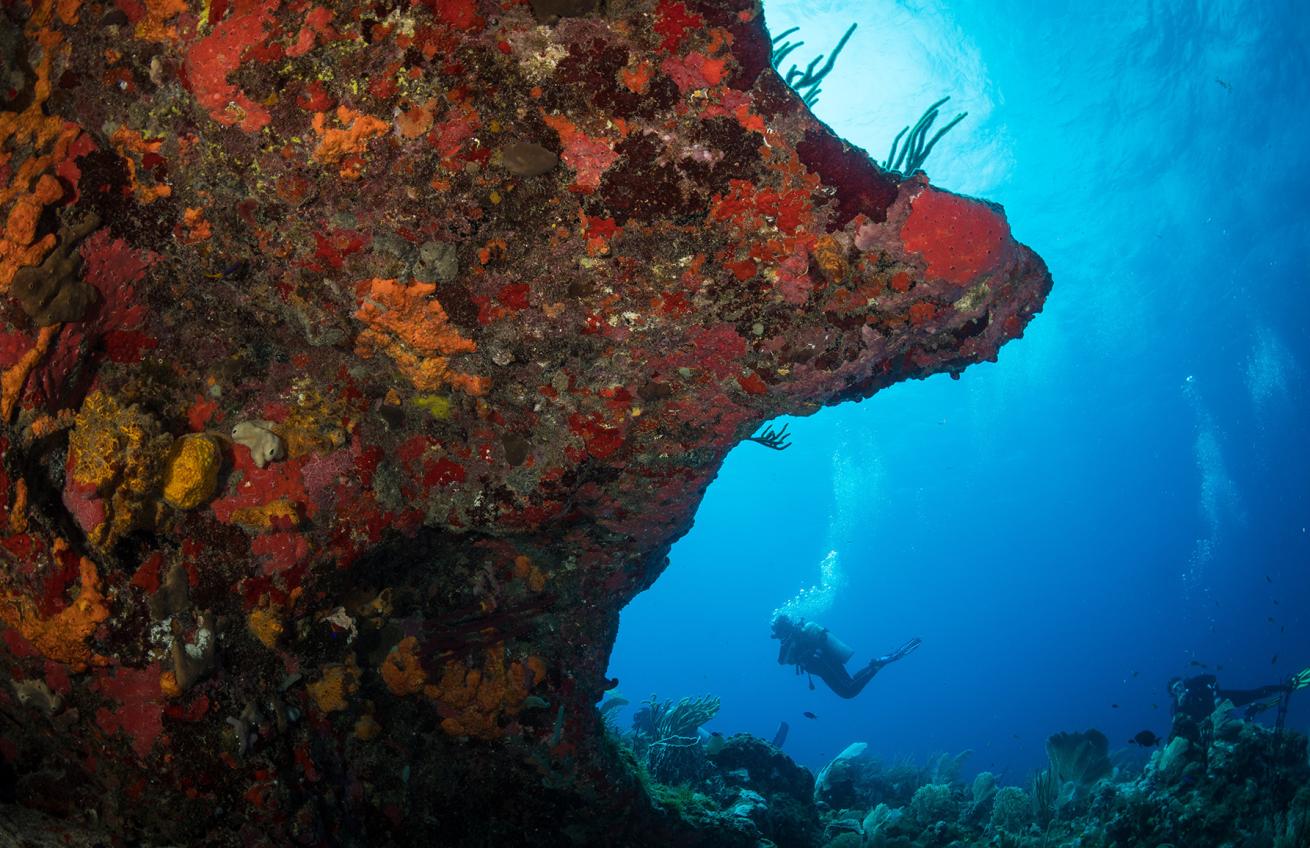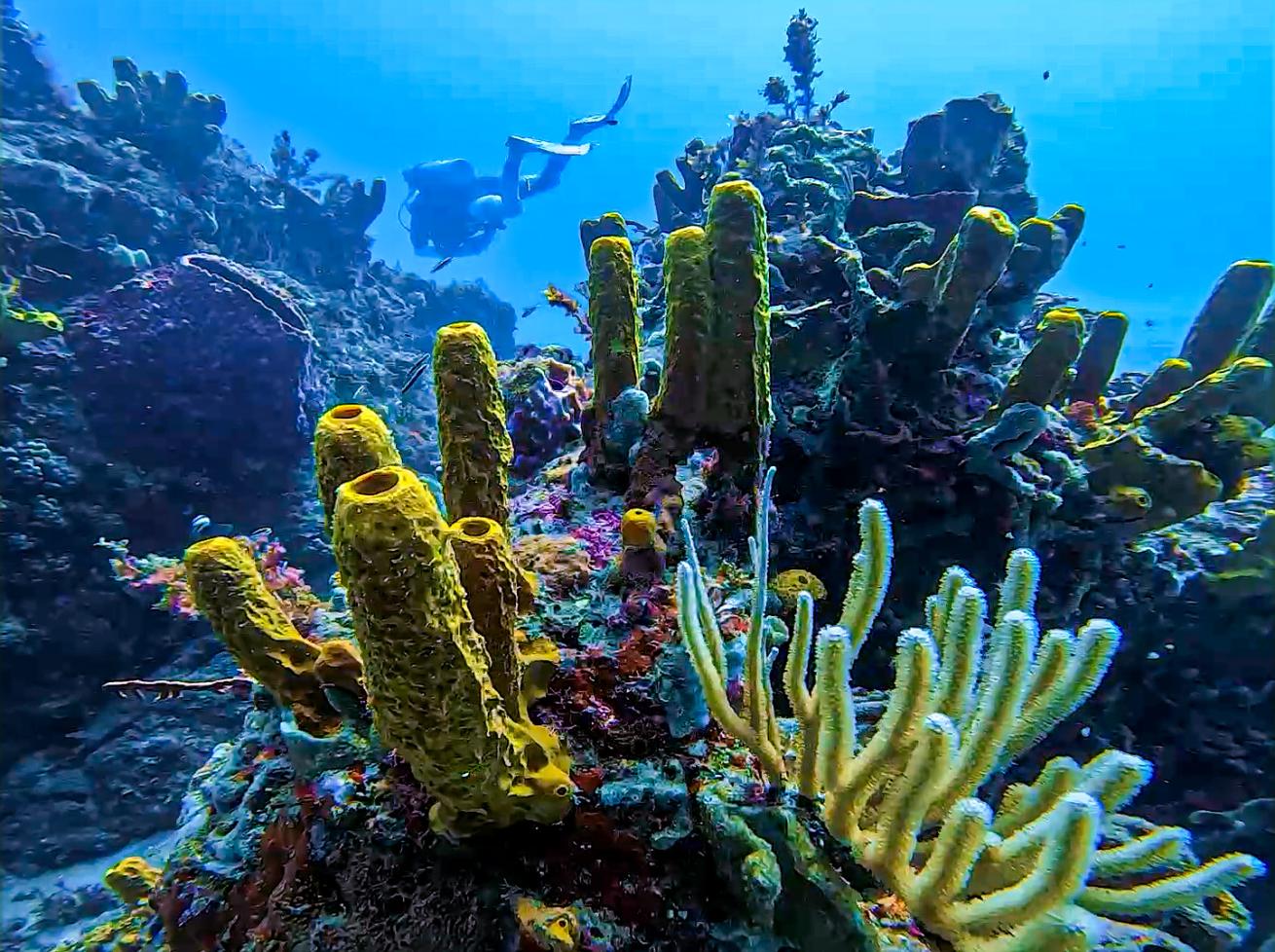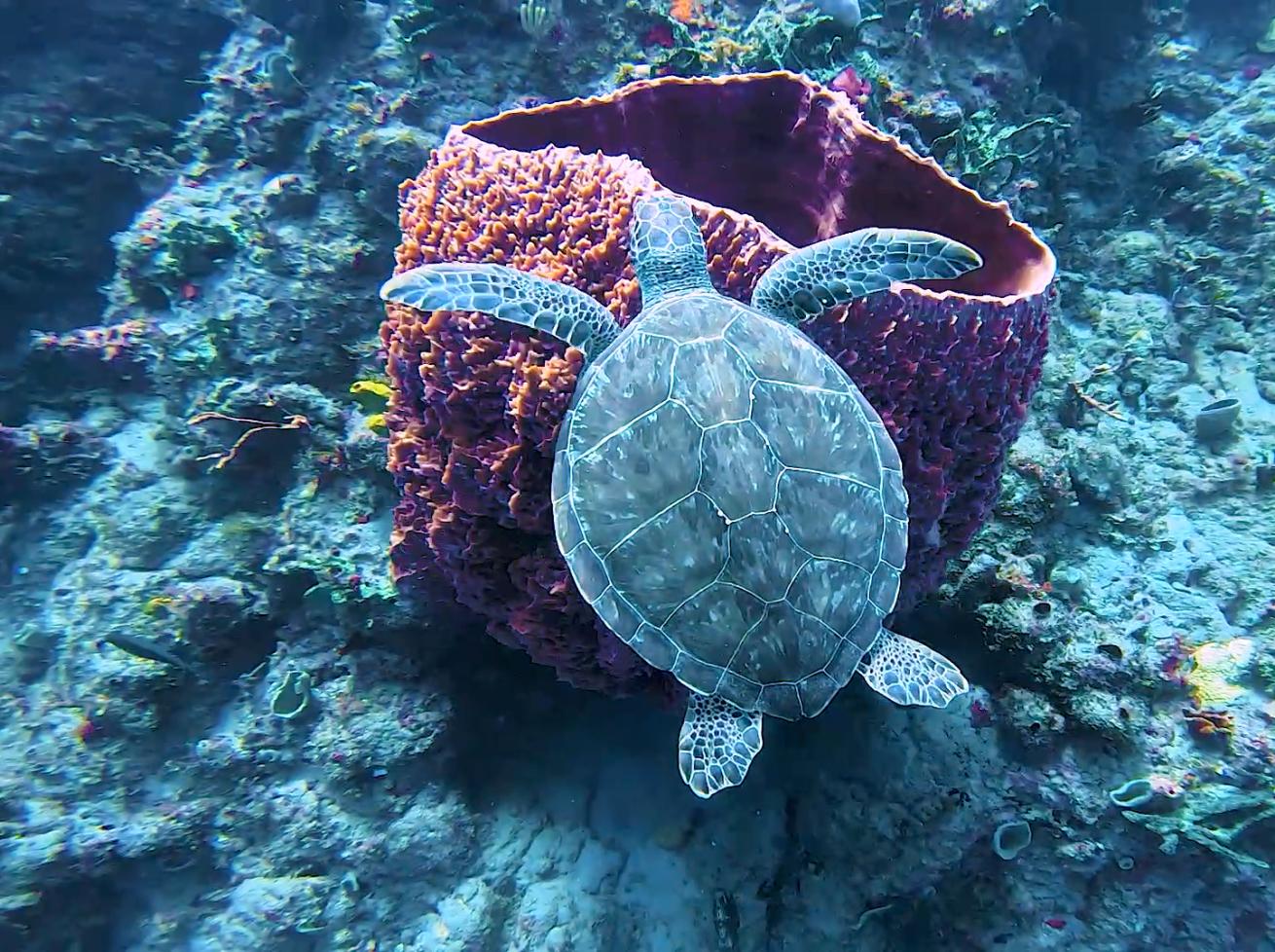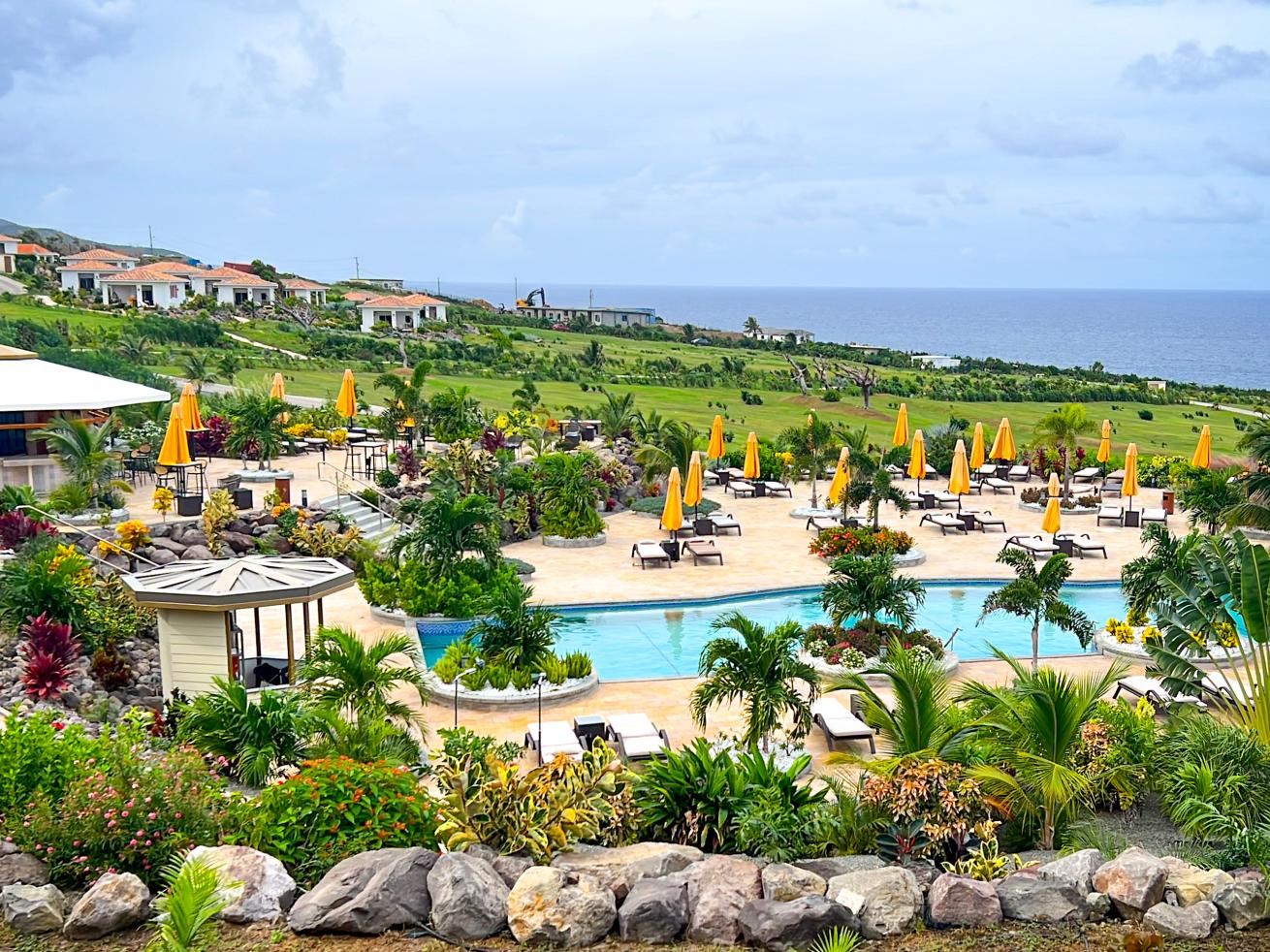Diving in Statia: More Than Just Blue Beads

Shutterstock.com/timsimages.uk
Not many people have heard of the Caribbean island nicknamed Statia, let alone its full Dutch name, Sint Eustatius. Perhaps that’s because it’s one of just two mere specks on the map in the Lesser Antilles—the other being Saba—between St. Maarten and St. Kitts. However, those of the diving community who are in the know can attest that Statia, as little as it is, has much to offer with dozens of protected dive sites teeming with marine life. More than that, it’s the only place in the Caribbean where you may find a historic blue bead on the ocean floor—or rather, it’s the only place where said blue bead could find you. (And yes, you are allowed to take any discovered beads with you.)
To explain why scuba diving can be a unique experience in Statia over other destinations in the Caribbean, you must first know its backstory.
Erik TrinidadA blue bead found while diving in Statia.
Statia’s Past
Like all Caribbean islands, Statia has a history dating back to its indigenous tribes Before the Common Era, but one notable epoch of recorded history is the time of pirates and European colonization. Statia, a small, volcanically formed island of only about 8 square miles (21 square kilometers), was continuously a pawn in a three-way chess match of power between the English, French and Dutch. Under the Dutch, it was deemed a free trade, no-tax zone for all goods, so every trading nation had reason to do business there.
However, the reality of trade between the Old World and the Americas in the 18th and 19th centuries was that goods also included enslaved African people who were treated as property. Many slave ships passed through Statia, and during this dark age of slavery, blue beads were used as currency.

Erik TrinidadScuba diving in St. Eustatius National Marine Park
The Backstory of the Blue Beads
Made in European Dutch glass factories, Statia’s distinct blue beads were used to buy commodities on the island, e.g. African slaves. However, it’s also believed that some slave owners would gift blue beads to their Africans, who wore them on necklaces as a symbol of status.
The Dutch abolished slavery on July 1, 1863, and the ubiquitous beads lost their purpose in the slave market. Legend has it that a group of Statia’s freed slaves celebrated their emancipation by dumping a bunch of blue beads into the sea, and it’s there, scattered on the ocean floor, that these historic lost antiquities can still be found—although folklore will tell you that you are not to seek out Statia blue beads, they find you.
Related Reading: The World’s First Underwater Sculpture Park Gets an Upgrade
“We don't want people coming here solely to look for beads, which are not valuable in other places but are valuable to us. They're part of our culture,” says Gay Soetekouw, president of the St. Eustatius Center for Archaeological Research, who’s lived on the island for over three decades. “It's part of the cultural heritage of at least the older community, who have given beads to people who they want to see return to the island. There's a whole thing about if you find a bead, you should give it away, and you'll get more—which I adhere to. Whenever I find them, I give them away.”

Erik TrinidadSea turtle at the Aquarium dive site
Diving Beyond Blue Beads
While blue beads may have dark origins, they’re a unique national symbol today, and it remains a special moment to encounter them whether you’re on land or under the sea—where if you’re lucky, one will find you during a dive. But even without blue bead encounters, Statia’s dive sites are destination-worthy, with 36 of them in St. Eustatius National Marine Park, encompassing 10.5 square miles (27 square kilometers) of water and the marine life within.
The St. Eustatius National Parks Foundation (STENAPA), established in 1996, has protection and conservation policies for the entire coastline of the island—including two designated zones that prohibit fishing—which encourages tropical fish populations and coral reefs to thrive. The resulting healthy underwater ecosystem attracts all types of tropical fish, plus many sharks, rays and turtles. It’s not uncommon to see all of them in a single dive site, like the secluded “Aquarium” off the west coast.
There are also seven wreck dive sites, with one wreck so big ( 300 feet/100 meters in length) it’s considered two sites (north and south): the Charlie L. Brown wreck, an intentionally sunk former AT&T line boat, once responsible for laying the first TransAtlantic cable. It’s known to be a hangout for barracudas and sharks, and is amongst the most sought-out sites for advanced divers at a depth of 100 feet (30 meters).

Erik TrinidadGolden Rock Dive and Nature Resort
To get to the dive sites, you need to coordinate with a local dive shop. There are only a few options in Statia since the island is so small. Because it also provides overnight accommodations, I recommend the Golden Rock Dive and Nature Resort—the only big (and privately owned) resort on the island. It’s there that you can also learn to scuba dive in their saltwater lagoon, which houses a sunken school bus to explore and experience, before heading out to the open waters around Statia—where perhaps, a blue bead is waiting to find you.










